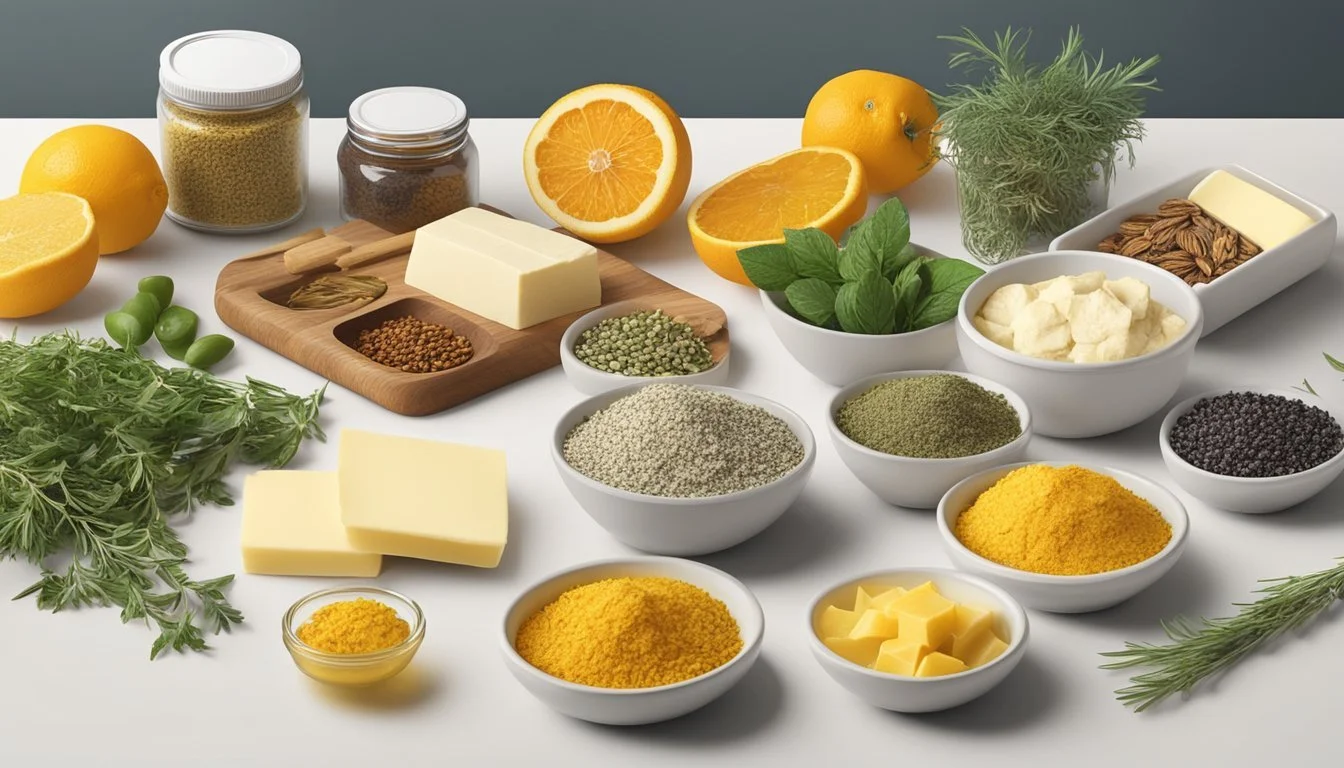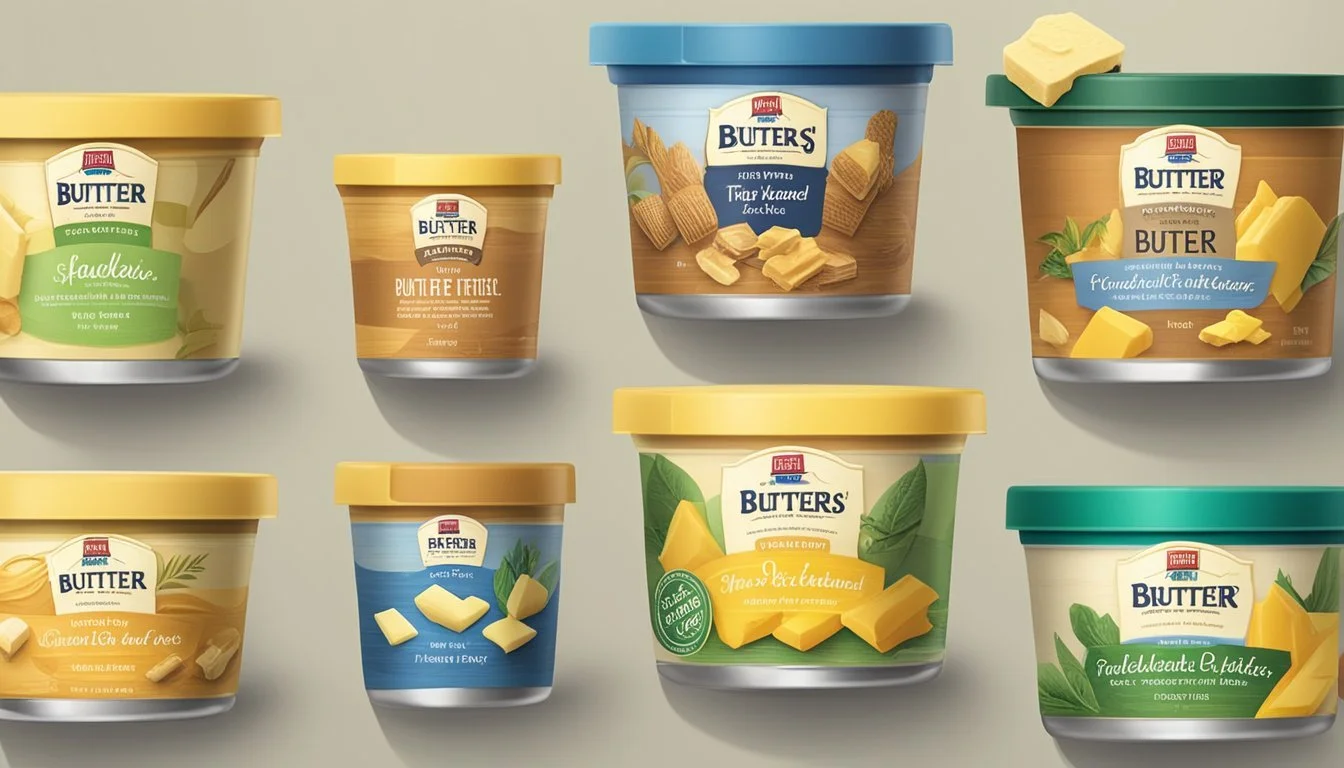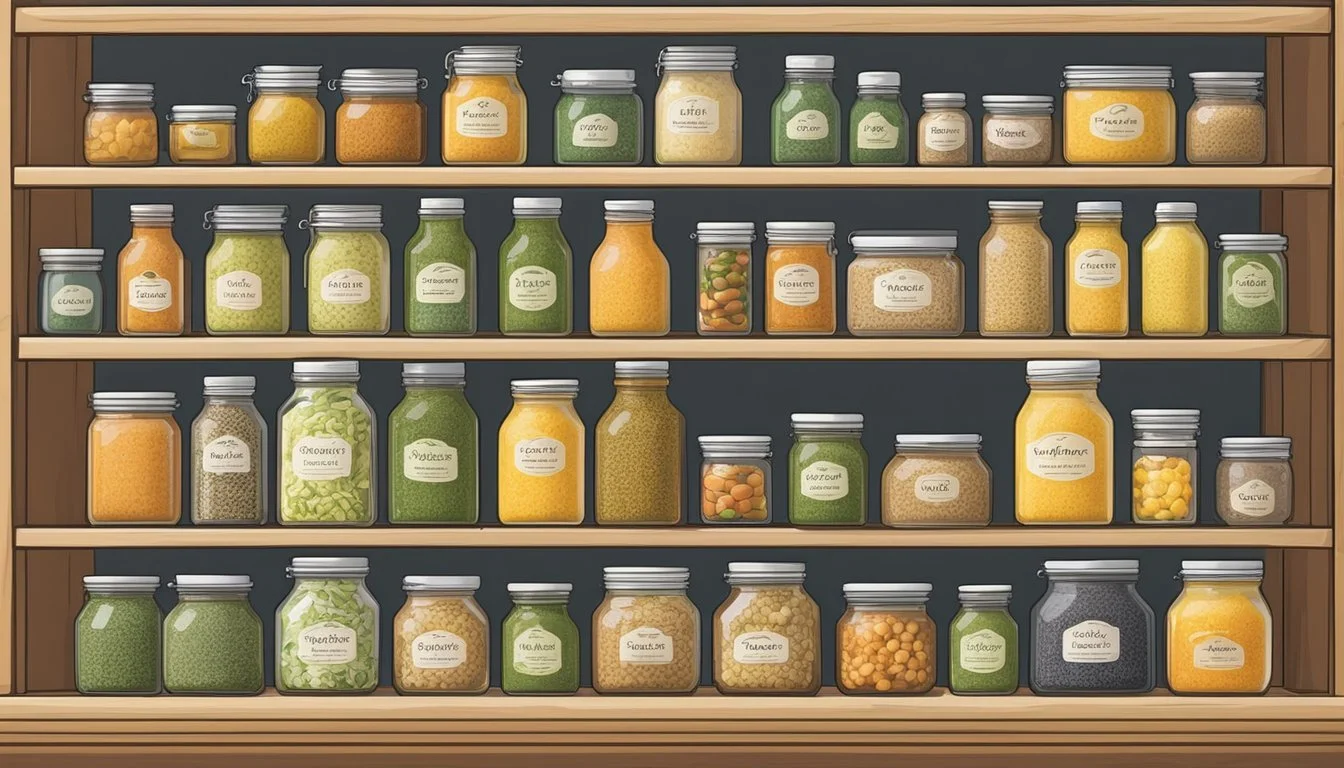Shelf-Stable Ingredient Combos for Flavored Butter
Elevate Your Recipes with Ease
In the world of culinary delights, flavored butter has emerged as a versatile ingredient that can enhance the taste of various dishes. It allows home cooks and professionals alike to infuse their recipes with a burst of flavor using a single, easy-to-prepare condiment. More importantly, making combinations using shelf-stable butter ensures that these flavorful additions are ready at your convenience, without the worry of spoilage. This ability to store them long-term without refrigeration bolsters not only the quality of the butter but also the practicality in day-to-day cooking.
Creating shelf-stable flavored butter is both an art and a science. Starting with a high-quality unsalted butter as the base ensures that the end product maintains the integrity of its flavor components. By incorporating shelf-stable mix-ins such as dried herbs, spices, and citrus zest, the flavored butter can be kept at room temperature or in the fridge for an extended period. This technique is invaluable for anyone looking to have a gourmet touch at their fingertips, ready to elevate a steak, a piece of bread, or a vegetable dish instantly.
The process is straightforward and allows for a vast range of creativity. Compound butters can be tailor-made to suit individual tastes or specific recipes, making them a fundamental tool in the arsenal of convenient and quality gastronomy. Whether rolling it into logs for slicing or molding it into shapes for elegant presentations, these butters shift an ordinary meal into a more refined dining experience with minimal effort.
Understanding Shelf Life and Storage
When creating shelf-stable flavored butters, understanding the factors that affect shelf life is crucial. Proper storage methods, differentiated by temperature and environment, can greatly extend their usability.
Factors Influencing Shelf Life
Shelf life of flavored butter is significantly influenced by the ingredients used. Incorporating preservatives and low-moisture elements can deter spoilage. Oxygen and light can hasten degradation, so it's important to store flavored butters in airtight containers to reduce exposure.
Refrigeration vs Counter Storage
For short-term storage, keeping flavored butter in the fridge in sealed containers is ideal, as it slows down fat rancidity and ingredient separation. On the counter, however, butters should be consumed within a week to prevent bacterial growth, especially in warm climates.
Freezing to Prolong Freshness
Freezing flavored butter extends its shelf life considerably. It maintains quality for several months when stored in airtight containers or wrapped in foil and placed in a freezer bag. This is preferable for long term storage, as it halts most bacterial growth.
Best Practices for Long Term Storage
For optimal longevity, store flavored butter in the freezer using oxygen absorbers and vacuum-sealed bags. Ensure that the refrigerator temperature is consistently below 40°F (4°C) to prevent spoilage. Regularly check for any signs of mold or off-odors, even when stored properly.
Basics of Butter Types and Quality
When preparing flavored butter, the foundational ingredient's quality and type are pivotal. Selecting a superior butter base ensures the most appealing texture and taste in the final compound butter product.
Choosing the Right Butter
The first step in creating shelf-stable flavored butter is choosing high-quality butter. It should have a creamy texture and a fresh taste, free from any signs of being rancid. Artisanal or high-end commercial brands typically offer the best in both taste and texture, often resulting from their churn methods and source of dairy product.
Unsalted vs Salted Butter
For maximum control over the flavor profile of compound butter, unsalted butter is recommended. Using unsalted butter allows for precise salting, ensuring the final product isn't overly salty. In contrast, salted butter can mask unwanted flavors but can make the butter become rancid more slowly due to salt's preservative nature.
Unsalted Butter: Better for flavor accuracy and freshness.
Salted Butter: Longer shelf life, but less control over the final taste.
Understanding Compound Butter
Compound butter is made by incorporating additional ingredients into the base butter. This can include herbs, spices, or other flavorings. The purpose of compound butters is to enhance and complement the flavors of various dishes. They should be made with butter of good quality to avoid greasiness or textural issues when the compound butter melts. Unlike its more simple counterparts, compound butter can be formed into shapes or wrapped in parchment for storage.
Compound Butter: A blend of butter and additional ingredients.
Texture: Smooth and easily spreadable when at room temperature.
Quality: The butter base should not be rancid and must have a pleasant, fresh flavor.
Ingredients for Flavored Butter
Creating flavored butter is a culinary technique that allows for imaginative blends of shelf-stable ingredients. By combining base ingredients like quality butter with herbs, spices, and other add-ins, one can elevate simple dishes with rich, nuanced flavors.
Herbs and Spices
Fresh Herbs: Utilizing fresh herbs such as parsley, thyme, or rosemary imparts a vibrant burst of flavor.
Dried Spices: Ground cinnamon, nutmeg, and paprika can be used to create aromatic and warming butter varieties.
Vegetable and Nut Add-Ins
Garlic: A staple ingredient for savory butters, providing a sharp, distinctive taste.
Nuts: Finely chopped nuts like almonds or pecans offer a satisfying crunch and depth of flavor.
Sun-dried Tomatoes: When diced, they lend a tangy and rich, umami dimension to butter.
Sweet and Savory Combinations
Sweet Mix-ins:
Honey: Adds a natural sweetness, pairing well with spices like cinnamon for a delightful spread.
Savory Additions:
Cheese: Incorporating hard, grated cheeses such as Parmesan can produce a luxurious and savory flavored butter.
Preparation and Use of Flavored Butters
Creating flavored butters, also known as compound butters, is a straightforward process that can elevate an array of dishes. By incorporating shelf-stable ingredients, one can craft a versatile condiment ideal for enhancing both savory and sweet meals.
Making Compound Butter
To prepare compound butter, one begins with softened butter to ensure easy blending. Herbs, spices, and other shelf-stable mix-ins are finely chopped or ground and thoroughly combined with the butter. The mixture is then placed onto plastic wrap, rolled into a log shape, and refrigerated until firm. Compound butter can be sliced or melted to add depth to various recipes.
Serving Suggestions
Compound butter adds a sophisticated touch to everyday items. It can be served atop baked goods like rolls and biscuits, or used as a spread for toasts and crackers. Vegetables and eggs can be enlivened with a pat of flavored butter, and it also serves as an excellent finishing touch for grilled meats. Corn on the cob brushed with compound butter becomes a popular delight, and even popcorn can be transformed with its savory or sweet richness.
Incorporating Flavored Butter in Recipes
Compound butter recipes can be used beyond simple toppings. When used in cooking, the flavored butter can be melted into rich sauces or used to baste meat during roasting to infuse flavor and moisture. It's versatile enough to also be incorporated into the dough of biscuits and pastries for a subtle and distinct taste.
Food Safety and Spoilage Prevention
When creating flavored butter, understanding the indicators of spoilage and employing effective preservation techniques are critical for ensuring safety and maintaining quality.
Signs of Spoilage
Spoilage in butter can be detected through various sensory cues. Consumers should be attentive to changes in:
Color: Butter showing signs of discoloration, such as dark spots or unusual tints, may indicate the presence of mold or bacterial growth.
Texture: When butter exhibits a grainy or slimy texture, it could be a signal of spoilage.
Odor: An off or sour smell is a strong indication that flavored butter has gone bad.
Taste: Any unexpected sour or stale flavors in butter suggest spoilage and should not be consumed.
Techniques to Extend Butter Freshness
To maintain the freshness of flavored butter, several preservation methods can be applied:
Temperature Control: Keeping butter refrigerated at or below 40°F (4°C) limits the growth of spoilage-causing bacteria and mold.
Airtight Containers: Using containers with tight seals can prevent oxygen exposure, which contributes to rancidity.
Oxygen Absorbers: Including oxygen absorbers in packaging helps to minimize oxidation and prolong shelf life.
Adding Preservatives: Certain preservatives can be incorporated into the butter to inhibit bacterial and mold growth while still retaining quality. Natural options include salt and vinegar, and commercial options could be specifically designed for dairy products.
Consistent use of these techniques can significantly reduce the risk of spoilage, allowing flavored butter to be enjoyed safely for a longer period.
Packaging and Preservation Methods
Preserving and packaging flavored butters require techniques that ensure longevity and maintain taste. It is essential to consider both home solutions and commercial options for shelf-stability.
Home Packaging Solutions
For at-home preservation, individuals can rely on dehydrating butter to create butter powder, which can be reconstituted when needed. Dehydrated butter generally implies removing moisture under low heat, a crucial step to enhance shelf life. Butter powder offers extended storage time, while maintaining a satisfactory flavor profile when used as a base for flavored butters.
In the household context, Mylar bags represent a suitable packaging material for butter powder due to their strong barrier qualities which protect from light, moisture, and oxygen—all factors that can reduce a product’s shelf life. For preparedness enthusiasts, placing butter powder in Mylar bags alongside oxygen absorbers can dramatically increase its shelf stability.
One can also use #10 cans, large, sturdy cans that are commonly used for bulk storage, offering an airtight environment that can keep butter powder fresh for years when combined with proper sealing methods and storage conditions.
Commercial Shelf-Stable Butter Options
The commercial sector often utilizes canned butter, which can last for extended periods due to the sterilization process and hermetic sealing it undergoes. The incorporation of emulsifiers and antioxidants in the commercial making of flavored butters is crucial. Emulsifiers help in maintaining the consistency and integration of butter, especially when herbs, spices, or other flavoring agents are added. Meanwhile, antioxidants prevent oxidation, a process that can cause rancidity and flavor loss.
Through packaging innovations, such as Modified Atmosphere Packaging (MAP), commercial producers can significantly extend the shelf-life of flavored butters. This method adjusts the atmospheric composition inside the packaging, thus slowing down microbial growth and oxidation. In the case of butter, a lower oxygen environment can help preserve its quality.
On the whole, both home and commercial methods for packaging and preserving shelf-stable flavored butters focus on minimizing exposure to factors that cause spoilage, while ensuring ease of use and flavor retention.
Enhancing Culinary Experience
Flavored butter plays a pivotal role in enriching dishes with complex flavors and adding a luxurious texture. The incorporation of shelf-stable ingredients allows for both convenience and the creation of an array of savory and sweet butters.
Unique Flavor Enhancers
For an instant boost in richness and flavor, one can turn to shelf-stable ingredients like powders and dried herbs. They can transform plain butter into a flavor enhancer without compromising texture.
Powders: Ingredients like garlic powder, onion powder, and dried citrus zest can merge with softened butter to yield a savory flavor without the need for fresh produce.
Dried Herbs and Spices: Dried herbs such as rosemary, thyme, and oregano remain potent flavor enhancers longer than their fresh counterparts while adding a gourmet touch.
Creating Complex Flavors
The art of creating complex flavors involves layering different elements that complement each other. Savory compound butter is an exemplar of such culinary alchemy.
Versatility: By integrating combinations of cheeses, dried mushrooms, or even anchovy paste, the versatility of compound butter is showcased, with each ingredient building upon the next to deepen the flavor profile.
Convenience: These ingredient combos not only enhance flavor but also add a level of convenience, allowing chefs to prepare a multitude of flavor bases in advance that are ready to use at a moment's notice.
Through the strategic use of shelf-stable mix-ins, the culinary experience is elevated, turning simple dishes into complex, flavor-rich masterpieces with minimal effort.
Shelf-Stable Butter for Outdoor and Emergency Use
Shelf-stable butter options are crucial for those looking to ensure food security during outdoor adventures or emergencies. These products are designed to have an extensive shelf life while maintaining the taste and nutritional value of traditional butter.
Prepping and Emergency Preparedness
For individuals focused on emergency preparedness, butter powder emerges as a particularly stable option because of its long shelf life and ease of storage. It generally contains a blend of dehydrated butter, nonfat milk, and enriching agents such as vitamin E and vitamin C. Manufacturers of these powdered butters often package them in #10 cans, and when stored properly, these cans have a shelf life of up to 10 years. The powdered form allows for a lightweight and efficient means of carrying essential fats and flavors, a key consideration in prepping.
Shelf Life: Up to 10 years
Ingredients: Butter powder, nonfat milk, vitamins
Packaging: #10 cans with oxygen absorbers
Butter Options for Camping and Outdoor Activities
When it comes to camping and outdoor activities, convenience and flavor are paramount. Pre-made powdered butter is a versatile and able product that simplifies meal prep in nature's kitchen. It can be used to enhance outdoor meals, from pan-fried trout to a warm batch of biscuits by the campfire. For a homemade touch, individuals can also pressure can butter for longer-term storage, although it's recommended to take caution with homemade canned butter as it's more perishable than commercially processed alternatives.
Commercially Processed: Freeze-dried, long shelf life
Homemade Canned Butter: Requires caution, shorter shelf life than powdered
Usage: Adds flavor to meals, versatile in cooking
These shelf-stable butter alternatives provide reliability for those dedicated to preparedness and the freedom to indulge in flavorful meals for outdoor enthusiasts.
Conclusion
Creating flavored butter at home using shelf-stable ingredients is a straightforward process that any home cook can master. The simplicity of mixing butter with various add-ins affords a vast array of flavor possibilities. These compound butters can impart a gourmet touch to everyday meals.
For the home cook looking to explore beyond basic seasoning, crafting flavored butter from shelf-stable ingredients enables them to prepare a stockpile of unique condiments. The flavors not only hold well, but they also sustain the integrity of the ingredients over time.
A successful blend involves just a few steps: choosing the right additives, ensuring full integration into the butter, and proper storage.
Here’s a quick guide to the essentials:
Selecting Ingredients: Choose seasoning agents like dried herbs, spices, or dehydrated vegetables for long-lasting flavor.
Preparation: Soften the butter for easy mixing, and fold in the chosen additives.
Storage: Roll the mixture into logs using plastic wrap or parchment, then refrigerate or freeze.
By following these basic tenets, flavored butter becomes not just a condiment but an invitation to creativity. The convenience of having these rich, nuanced spreads at the ready elevates the culinary experience with minimal effort.
Whether it’s to enhance the taste of bread, meats, vegetables, or pasta, flavored butter prepared with shelf-stable ingredients proves versatile and invaluable in home cooking. The addition of such personalized touches promises to satisfy the palette while showcasing the home cook's ingenuity.







